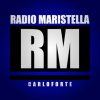Informativa per il trattamento dei Dati personali
Redatta ai sensi del Reg. 679/2016
L’Associazione Stella Maris, con sede in Carloforte (SU), sede legale via Goito 1 Carloforte, sede operativa: Corso Tagliafico, 58 Carloforte, P.iva: 02596830923 (di seguito, “Titolare”), in qualità di Titolare del trattamento, La informa ai sensi dell’art. 13 D.Lgs. 30.06.2013 n.196 (in seguito, “Codice Privacy”) e dell’art. 13 Regolamento UE n. 2016/679 (in seguito, “GDPR”) che i Suoi dati saranno trattati con le modalità e per le finalità seguenti:
Oggetto del trattamento
Il Titolare tratta i dati personali, identificativi (ad esempio nome, cognome, ragione sociale, indirizzo, e-mail, riferimenti bancari e di pagamento – di seguito “dati personali” o anche “dati”) con la finalità di provvedere alla gestione del rapporto commerciale in essere.
Finalità del trattamento
I Suoi dati personali sono trattati:
Senza il Suo consenso espresso (art.6 lett. b), e) GDPR), per le seguenti Finalità di Servizio:
concludere i contratti per i servizi erogati dall’interessato al Titolare;
adempiere agli obblighi precontrattuali, contrattuali e fiscali derivanti da rapporti con Lei in essere;
adempiere agli obblighi previsti dalla legge, da un regolamento, dalla normativa comunitaria o da un ordine dell’Autorità (come ad esempio in materia di antiriciclaggio);
esercitare i diritti del Titolare, ad esempio il diritto di difesa in giudizio;
Solo previo Suo specifico e distinto consenso (art. 7 GDPR), per le seguenti finalità di Marketing:
InviarLe via mail, posta e/o sms contatti telefonici, newsletter, comunicazioni commerciali e/o materiale pubblicitario su prodotti o servizi offerti dal Titolare e rilevazione del grado di soddisfazione sulla qualità dei servizi;
InviarLe via mail, posta e/o sms contatti telefonici, newsletter, comunicazioni commerciali e/o promozionali di soggetti terzi (ad esempio business partner, compagnie assicurative, altre società collegate). Le segnaliamo che se siete già nostri clienti, potremo InviarLe comunicazioni commerciali relative a servizi e prodotti del Titolare, salvo Suo dissenso.
Modalità di trattamento
Il trattamento dei Suoi dati personali consta delle operazioni indicate all’art. 4 n.2) GDPR e precisamente: raccolta, registrazione, organizzazione, conservazione, consultazione, elaborazione, modificazione, selezione, estrazione, raffronto, utilizzo, interconnessione, blocco, comunicazione, cancellazione e distruzione dei dati. I Suoi dati personali sono sottoposti a trattamento sia cartaceo che elettronico e/o automatizzato. Il Titolare tratterà i dati personali per il tempo necessario per adempiere alle finalità di cui all’art. 2 e comunque per non oltre 10 anni dalla cessazione del rapporto, per le finalità di Servizio, e per non oltre 2 anni dalla raccolta dei dati per finalità di marketing.
Accesso ai dati
I Suoi dati potranno essere resi accessibili per le finalità di cui all’art. 2.A) e 2.B) della presente informativa:
a dipendenti e collaboratori del Titolare o delle società collegate, nella loro qualità di incaricati e/o responsabili interni del trattamento e/o amministratori di sistema;
a società terze o altri soggetti (a titolo indicativo, istituti di credito, studi professionali, consulenti, società di assicurazione per la prestazione di servizi assicurativi, etc.) che svolgono attività di outsourcing per conto del Titolare, nella loro qualità di responsabili esterni del trattamento.
Comunicazione dei dati
Senza la necessità di un espresso consenso (ex art. 6 lett. b) e c) GDPR), il Titolare potrà comunicare i Suoi dati per le finalità di cui all’art. 2.A) a Organismi di vigilanza, Autorità giudiziaria, a società di assicurazione per la prestazione di servizi assicurativi, nonché a quei soggetti ai quali la comunicazione sia obbligatoria per legge per l’espletamento delle finalità dette. Tali soggetti tratteranno i dati nella loro qualità di autonomi titolari del trattamento.
Trasferimento dati
I dati personali sono conservati su server ubicati all’interno dell’Unione Europea. Resta in ogni caso intesa che il Titolare, ove si rendesse necessario, avrà facoltà di spostare i server anche extra-UE. In tal caso, il Titolare assicura sin d’ora che il trasferimento dei dati extra-UE avverrà in conformità alle disposizioni di legge applicabili (inclusi art. 44 e seguenti del GDPR), previa stipula delle clausole contrattuali standard previste dalla Commissione Europea.
Natura del conferimento dei dati e conseguenze del rifiuto di rispondere
Il conferimento dei dati per le finalità di cui all’art. 2.A) è obbligatorio. In loro assenza, non potremmo garantirLe i Servizi dell’art. 2.A).3 Il conferimento dei dati per le finalità di cui all’art. 2.B) è invece facoltativo. Può quindi decidere di non conferire alcun dato o di negare successivamente la possibilità di trattare dati già forniti: in tal caso, non potrà ricevere newsletter, comunicazioni commerciali e materiale pubblicitario relativi ai Servizi offerti dal Titolare. Continuerà comunque ad avere diritto ai Servizi di cui all’art. 2.A).
Diritti dell’interessato
Nella Sua qualità di interessato, gode dei diritti di cui all’art. 15 GDPR e precisamente dei diritti di:
i. ottenere la conferma dell’esistenza o meno di dati personali che La riguardano, anche se non ancora registrati e la loro comunicazione in forma intelligibile e formato interoperabile;
ii. ottenere l’indicazione: a) dell’origine dei dati personali; b) delle finalità e modalità del trattamento; c) della logica applicata in caso di trattamento effettuato con l’ausilio di strumenti elettronici; d) degli estremi identificativi del titolare, dei responsabili e del rappresentante designato ai sensi dell’art. 3, comma 1, GDPR; e) dei soggetti o delle categorie di soggetti ai quali i dati personali possono essere comunicati o che possono venirne a conoscenza in qualità di rappresentante designato nel territorio dello Stato, di responsabili o incaricati;
iii. ottenere: a) l’aggiornamento, la rettificazione ovvero, quando vi ha interesse, l’integrazione dei dati; b) la cancellazione, la trasformazione in forma anonima o il blocco dei dati trattati in violazione di legge, compresi quelli di cui non è necessaria la conservazione in relazione agli scopi per i quali i dati sono stati raccolti o successivamente trattati; c) l’attestazione che le operazioni di cui alle lettere a) e b) sono state portate a conoscenza, anche per quanto riguarda il loro contenuto, di coloro ai quali i dati sono stati comunicati o diffusi, eccettuato il caso in cui tale adempimento si rivela impossibile o comporta un impiego di mezzi manifestamente sproporzionato rispetto al diritto tutelato;
iv. opporsi, in tutto o in parte: a) per motivi legittimi al trattamento dei dati personali che La riguardano, ancorché pertinenti allo scopo della raccolta; b) al trattamento di dati personali che La riguardano a fini di invio di materiale pubblicitario o di vendita diretta o per il compimento di ricerche di mercato o di comunicazione commerciale, mediante l’uso di sistemi automatizzati di chiamata senza l’intervento di un operatore mediante e-mail e/o mediante modalità di marketing tradizionali mediante telefono e/o posta cartacea. Si fa presente che il diritto di opposizione dell’interessato, esposto al precedente punto b), per finalità di marketing diretto mediante modalità automatizzate si estende a quelle tradizionali e che comunque resta salva la possibilità per l’interessato di esercitare il diritto di opposizione anche solo in parte. Pertanto, l’interessato può decidere di ricevere solo comunicazioni mediante modalità tradizionali ovvero solo comunicazioni automatizzate oppure nessuna delle due tipologie di comunicazione.
v. Ove applicabili, ha altresì i diritti di cui agli artt. 16-21 GDPR (Diritto di rettifica, diritto all’oblio, diritto di limitazione di trattamento, diritto alla portabilità dei dati, diritto di opposizione), nonché il diritto di reclamo all’Autorità Garante.
9. Modalità di esercizio dei diritti
Potrà in qualsiasi momento esercitare i diritti inviando:
una raccomandata A/R a Associazione Stella Maris - Corso Agostino Tagliafico, 58
09014 Carloforte 8 (SU)
una e-mail all’indirizzo privacy@teleradiomaristella.it
10. Titolare, responsabile e incaricati
Il Titolare del trattamento è L’associazione Stella Maris. L’elenco aggiornato dei responsabili e degli incaricati al trattamento è custodito presso la sede legale del Titolare del trattamento.
Il Responsabile del Trattamento dei dati.













